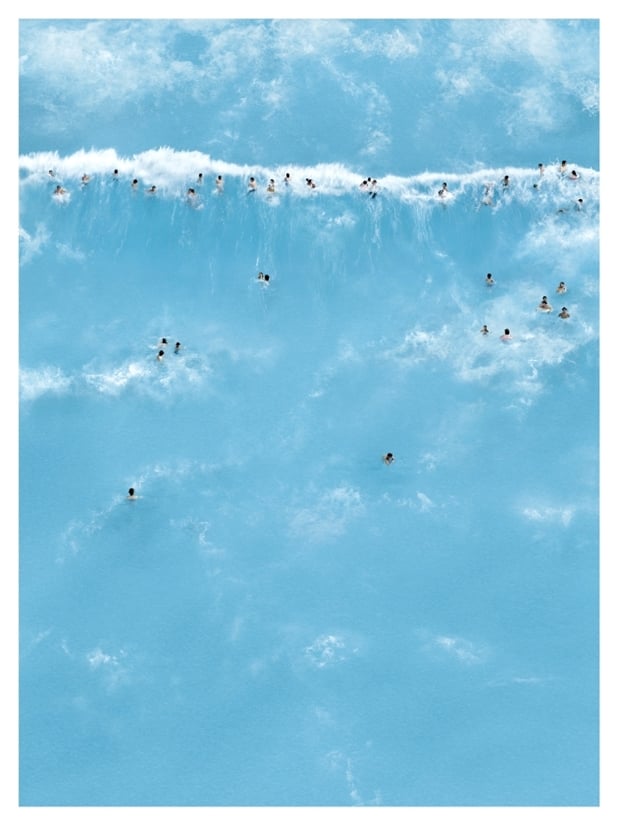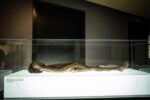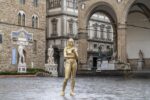Michelangelo Castagnotto / Ralf Kaspers

Gagliardi Art System presenta in esclusiva in Italia la mostra personale del fotografo tedesco Ralf Kaspers. Mentre Le Macchine svelate di Michelangelo Castagnotto sono modelli disincantati, liberatori e svincolanti, di relazione tra l’artista e chi entra in contatto con l’opera.
Comunicato stampa
Ralf Kaspers.Photographies
Gagliardi Art System presents, exclusively for Italy, a personal exhibition of German photographer Ralf Kaspers. Since 2007, the artist has been working on a serial project that consists in organized sets maggots and flies, bullet casings and gold bars, locusts and rooster heads and of tube-like hairs and rows of old teeth, used as pars pro toto to point to humanity and life and death.
As Barbara Hofmann-Johnson explains: […] The perception of the individual object is obscured by the ornamental effect and the computer-generated structural repetition together with the use of an allover composition, and the sequential arrangement becomes a metaphor for both repetition and for the fact that an ‘organized group’ – or should we rather call it an ornamental socialization? – creates its own unique pictorial qualities and effects. As visual repeats, lined up in rank and file and united by an aesthetically structured surface, Kasper’s photographic series show, beyond the ornamental effect produced by the visual manipulation, how the repetition of an individual object can create images that open up new levels of meaning.” […]
More food for thought on the different way to perceive objects and people is provided by the series Summerland. When first looking at these works, it seems that a large number of people are suspended in the sky, in a dreamlike, almost mystical dimension. The large size of the works deceives the observer's perception: the people who animate these large 'photographic frescoes' are actually immersed in heavenly waters.
"Very often an image functions through confounding the viewer’s sense of scale" explains David Galloway. "Moving through this pictorial universe is not unlike a journey through the topsy-turvy world of Alice in Wonderland, where objects unexpectedly shrink or expand – including the heroine herself. “Curioser and curioser,” cried Alice. “Now I’m opening out like the largest telescope that ever was.” ” […]
opening Thursday, February 9, 2012 6.30 – 9 p.m.
February 10 - March 24, 2012
Tue - Sat: 3.30 - 7 p.m.
Ralf Kaspers.Fotografie
Gagliardi Art System presenta in esclusiva in Italia la mostra personale del fotografo tedesco Ralf Kaspers. L’artista dal 2007 lavora ad un progetto seriale che prevede insiemi ordinati di bachi e mosche, bossoli di proiettili e lingotti d'oro, locuste e teste di gallo, peli tubolari e file di denti vecchi, utilizzati come pars pro toto per additare l'umanità, la vita e la morte.
Come dice Barbara Hofmann-Johnson: […] la ripetizione strutturale elaborata al computer, unita all'uso di una composizione a tutto campo e di una disposizione sequenziale, si fa metafora della ripetizione ma anche del fatto che un ‘gruppo organizzato’ è creatore delle sue stesse caratteristiche e dei suoi originali effetti visivi. In quanto repliche visive, allineate, messe in fila e raccordate da una superficie esteticamente strutturata, le serie fotografiche di Kaspers mostrano, al di là dell'effetto ornamentale prodotto dalla manipolazione visiva, come la ripetizione di un singolo oggetto possa generare immagini che aprono a nuove dimensioni di senso” […]
Un ulteriore spunto riflessivo sul diverso modo di percepire gli oggetti e le persone è dato dalla serie Summerland. In un primo momento sembra che numerose persone siano sospese in cielo, in una dimensione onirica, quasi mistica. La grande dimensione delle opere inganna la percezione del fruitore: le persone che animano questi grandi ‘affreschi fotografici’ sono in realtà immersi in acque celesti.
[…] “Molto spesso il meccanismo di funzionamento dell'immagine è quello di confondere il senso delle dimensioni dell'osservatore” – dice David Galloway. “Muoversi all'interno di questo universo visivo non è molto diverso da un viaggio nel mondo alla rovescia di Alice nel Paese delle Meraviglie, dove gli oggetti - compresa la protagonista - si rimpiccioliscono o crescono inaspettatamente. “Curiosar e curiosar” esclama Alice, “Ora mi allungherò come il più grande telescopio mai esistito.” […]
Michelangelo Castagnotto. Unveiled Machines
The MACHINES of Michelangelo Castagnotto, which will be on display at Gagliardi Art System, are dis-illusioned models, liberating and unchaining, of relationships between the artist and those who come in touch with his work. The definition of “machine” is to be understood as a sequence of gestures and operations that provide a point of entry into the work itself and its language: a true SEMANTIC RITUAL OF ACCESS TO THE WORK. This ritual puts into practice the idea of culture as negotiable meaning. This is why the machines take the form of a de-structured protocol, not of a Neo-Dada paradox, which is not a practice.
The research process is ironized by using mystifying symbols that are both guides and obstacles in exploring the work. Going through a work means getting over the habit of seeing reality through fixed schemes, harnessing instead the power of the new experience, climbing over, as in an obstacle course, the misleading expectations of common sense.
In the work “IL BAULE” (The Trunk) the first of these misleading symbols is painting itself. The artist uses painting not as traditional syntax, but as a formalized linguistic model to be attained by following a praxis. The focus then is not the painting, but the experience that leads to the painting.
The “READING MACHINE” allows to use reading while depriving it of its textual content. What is left is, therefore, is the purely aesthetic side of reading. This is another praxis.
In the “MACHINE FOR READING STONES” an apparently natural gesture becomes inherently random, whatever the spatial arrangement taken by the stones once thrown.
In this case the ritual is the act of throwing.
Machines are the prototype of an experience that finds its rules inside itself; therefore, these are aesthetic machines. The meaning of every single experience, which makes it unique, becomes language through the form of relation.
The machines of Michelangelo Castagnotto encourage people to think that aesthetics is a language of experience.
opening Thursday, February 9 2012 6.30 – 9 p.m.
February 10 - March 24, 2012
Tue - Sat: 3.30 - 7 p.m.
Michelangelo Castagnotto. Le macchine svelate
Le MACCHINE di Michelangelo Castagnotto presentate in mostra da Gagliardi Art System sono modelli disincantati, liberatori e svincolanti, di relazione tra l’artista e chi entra in contatto con l’opera. La definizione di “macchina” è da intendersi come sequenza di gesti e operazioni che introducono all’interno dell’opera stessa e del suo linguaggio: un vero e proprio RITUALE DI ACCESSO SEMANTICO ALL’OPERA. Questo rituale mette in pratica un’idea della cultura come significato negoziabile. Per questo hanno la forma di un protocollo smontato e non di un paradosso neo-dadaista, che non è una pratica.
Il percorso di ricerca viene ironizzato da simboli mistificatori che sono al tempo stesso guida e intoppo per attraversare l’opera. Attraversarla vuol dire superare la tendenza a vedere la realtà con schemi fissi, facendo invece perno sulla novità dell’esperienza, scavalcando come in un percorso ad ostacoli le attese fuorvianti del buon senso.
Nell’opera IL BAULE il primo dei simboli fuorvianti è la pittura in se stessa. L’artista usa la pittura non come tradizionale sintassi, bensì come modello linguistico formalizzato a cui arrivare eseguendo una prassi. Non il quadro, ma l’esperienza di arrivare al quadro.
La MACCHINA DELLA LETTURA permette di usare la lettura svuotandola del contenuto testuale. Rimane così il puro senso estetico del leggere. Anche questa è una prassi.
Nella MACCHINA PER LA LETTURA DEI SASSI, un gesto in apparenza naturale diviene aleatorio in sé, qualunque sia la disposizione che assumono le pietre scagliate.
In questo caso è il lancio ad essere un rituale.
Le macchine sono il prototipo di un’esperienza che trova la sua regola al proprio interno; perciò sono macchine estetiche. Il senso di ogni singola esperienza, che la rende originale, diventa linguaggio attraverso la forma della relazione.
Le macchine di Michelangelo Castagnotto incoraggiano a pensare che l’estetica sia il linguaggio dell’esperienza.



